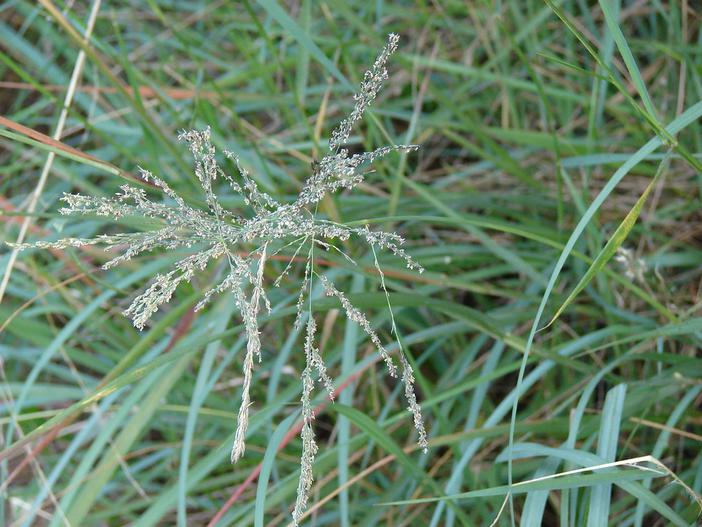Weeping Lovegrass
(Eragrostis curvula)
Weeping Lovegrass (Eragrostis curvula)
/
/

Forest and Kim Starr
CC BY 2.0




































































Estimated Native Range
Summary
Weeping Lovegrass is characterized by its long, slender, drooping leaves that can grow up to 65 centimeters (2.13 ft) in length and have a distinctive rolled edge. The inflorescence is a panicle with branches lined with spikelets, each containing up to 15 flowers, and one panicle can produce up to 1000 seeds. The plant is capable of self-fertilization or apomixis, which allows for prolific seed production without fertilization. It is often used for ornamental purposes, erosion control, and as forage in pastures due to its rapid growth and adaptability. In cultivation, Weeping Lovegrass thrives in full sun and requires medium amounts of water, preferring soils with medium to fast drainage. However, it can become invasive outside its native range, spreading rapidly and potentially outcompeting native species. Gardeners should be cautious of its potential invasiveness and consider using native alternatives in areas where it is known to be problematic.CC BY-SA 4.0
Plant Description
- Plant Type: Grass
- Height: 1.5-4 feet
- Width: 0.188-0.5 feet
- Growth Rate: Rapid
- Flower Color: N/A
- Flowering Season: Spring
- Leaf Retention: Evergreen
Growth Requirements
- Sun: Full Sun
- Water: Medium
- Drainage: Medium, Fast
Common Uses
Bank Stabilization, Bird Garden, Butterfly Garden, Drought Tolerant, Edible*Disclaimer: Easyscape's listed plant edibility is for informational use. Always verify the safety and proper identification of any plant before consumption., Erosion Control, Groundcover, Low Maintenance, Salt Tolerant, Street Planting
Natural Habitat
Originates from open grasslands and plains in Southern Africa
Other Names
Common Names: Catalina Lovegrass, African Lovegrass, Boer Love Grass, Weeping Love Grass, Gebogenblättriges Liebesgras, Zuid-Afrikaans Liefdegras, Afrikanskt Kärleksgräs, 垂愛草
Scientific Names: , Eragrostis curvula, Eragrostis chloromelas, Eragrostis curvala, Eragrostis filiformis, Eragrostis curvula var. curvula, Eragrostis jeffreysii, Eragrostis robusta, Eragrostis curvula var. conferta, Eragrostis capillifolia
GBIF Accepted Name: Eragrostis curvula (Schrad.) Nees